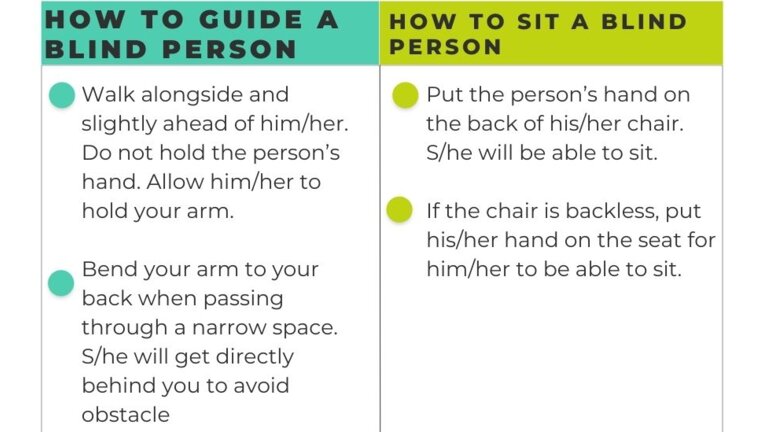- Always talk directly to the person. Do not use a third person to answer your questions i.e personal assistant/family member etc.
- Identify yourself so the participant with the visual impairment knows who you are.
- Inform the participant with visual impairment if you are moving away. Do not leave without telling him or her that you are leaving.
- Describe the space you are in as well as any things you see to the participant with visual impairment.
- Use descriptive language and name items instead of saying, ‘this’ or ‘that’.
- Read everything written on flip chart papers/PowerPoint out loud.
- When you are in a group, tell them who is present so that the participant with visual impairment knows who is around as this supports networking.
- When you are talking in a group, use the person’s name when you are directing the conversation to him or her.
- Speak naturally and clearly. There is no need to shout.
- In case there are pictures or other visualisations that are shown in a training or meeting, briefly describe what is there, or ask another participant to do this
- Avoid noisy places so that he or she can hear you clearly.
- Always ask first if the participant wants help. Do not help someone without asking him or her first.
- For participants with low vision use clear signs and documents. These can be in large letters or with letters that you can feel.
- For participants who are blind (B1 level) and can read braille, you can give written information in braille. If a participant is using a computer, you can also provide information in digital format/ soft copy.
- Do not play with or remove the white cane of a participant with a visual impairment from where they place it. If it is unavoidable for you to place the white cane elsewhere, remember to inform the participant. They need the white cane for mobility purposes.


